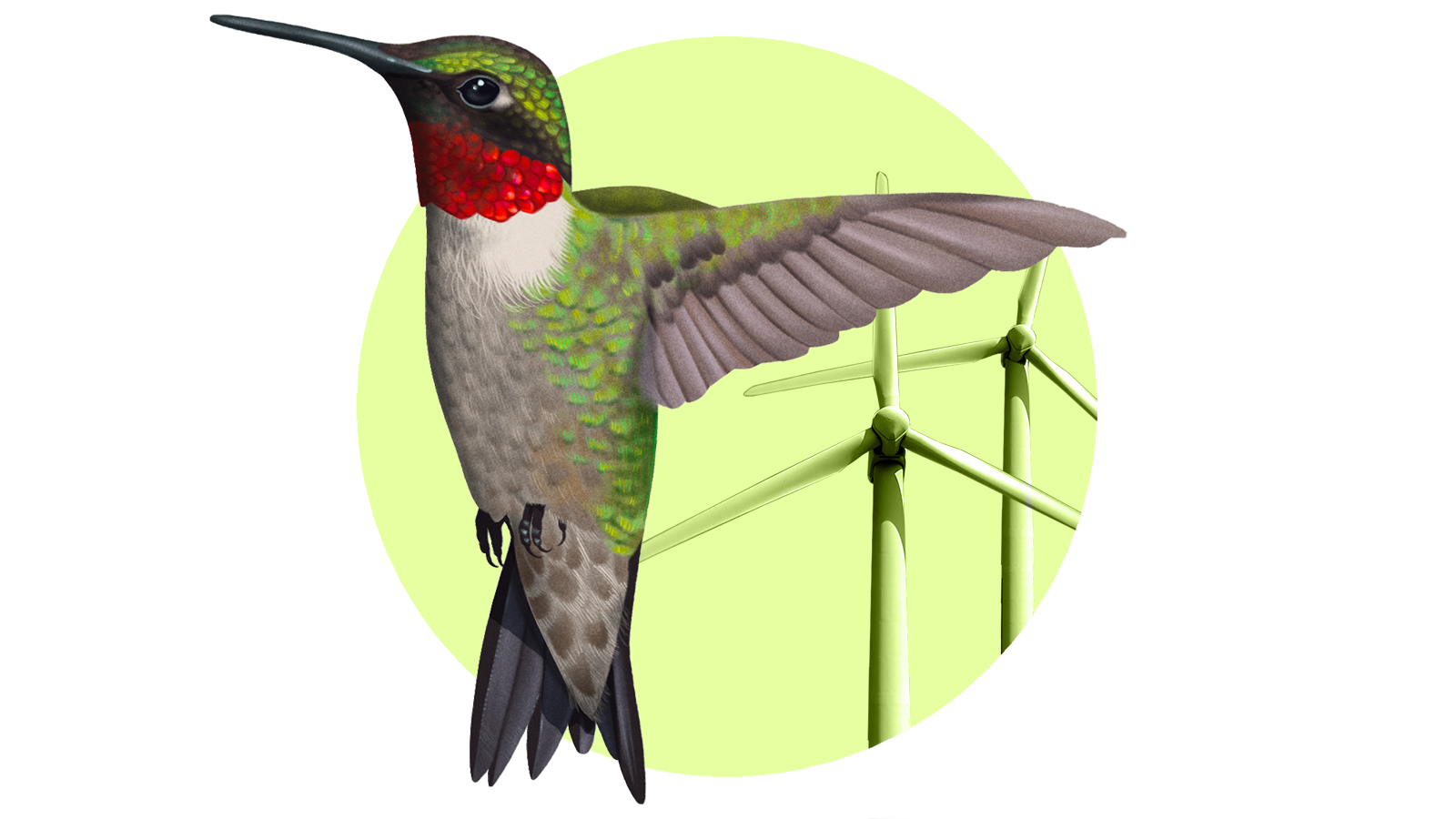Over the last two decades, New York state has repeatedly set some of the country’s most ambitious green energy benchmarks. But while the Empire State hopes to achieve net-zero carbon emissions by 2050, its most promising green energy source — wind — has remained stagnant for years, accounting for just 3 percent of the state’s power supply.
A complex regulatory process has frequently denied applications from renewable energy developers or driven them to such frustration that they’ve withdrawn their plans altogether. In one case, a proposed solar development in the Buffalo-area town of Cambria was rejected after violating local zoning laws. A wind farm slated for a small island on Lake Ontario was also scrapped after a hunter spotted a pair of eagles, which spurred a contentious environmental assessment.
In response to these failures, last year the state legislature established a new Office of Renewable Energy Siting. The office aims to streamline wind and solar development while retaining important safeguards like environmental assessments and community feedback. As this new office takes shape, state officials have sought input from environmental interests, including the New York Audubon Society, which secured regulatory language meant to minimize threats to birds and other wildlife by ensuring that turbines are properly sited and monitored.
Erin McGrath, Audubon’s policy manager in Albany, told Grist that the birding group was negotiating a “tug and pull” between the need to build renewables while preserving avian habitats. But she expressed faith in the state’s ability to maintain the right balance. “We strongly support the deployment of renewable energy projects as long as they are sited responsibly and avoid intense consequences to birds and vulnerable wildlife,” she said.
The office has received strong support from a number of other conservation groups, including The Sierra Club, the Natural Resources Defense Council, and the New York League of Conservation Voters.*
Nevertheless, the fledgling office, which only released its first decision in June, is now in jeopardy due to the work of a rogue avian protection nonprofit: the American Bird Conservancy, or ABC. In late June, ABC led a flock of fellow fowl enthusiasts and rural New York towns in a lawsuit to overturn the new office’s renewable energy siting guidelines. Among their claims is that the office is captured by corrupt special interests who are eager to “level hilltops, degrade or destroy sensitive habitat, harm wildlife, [and] kill birds.”
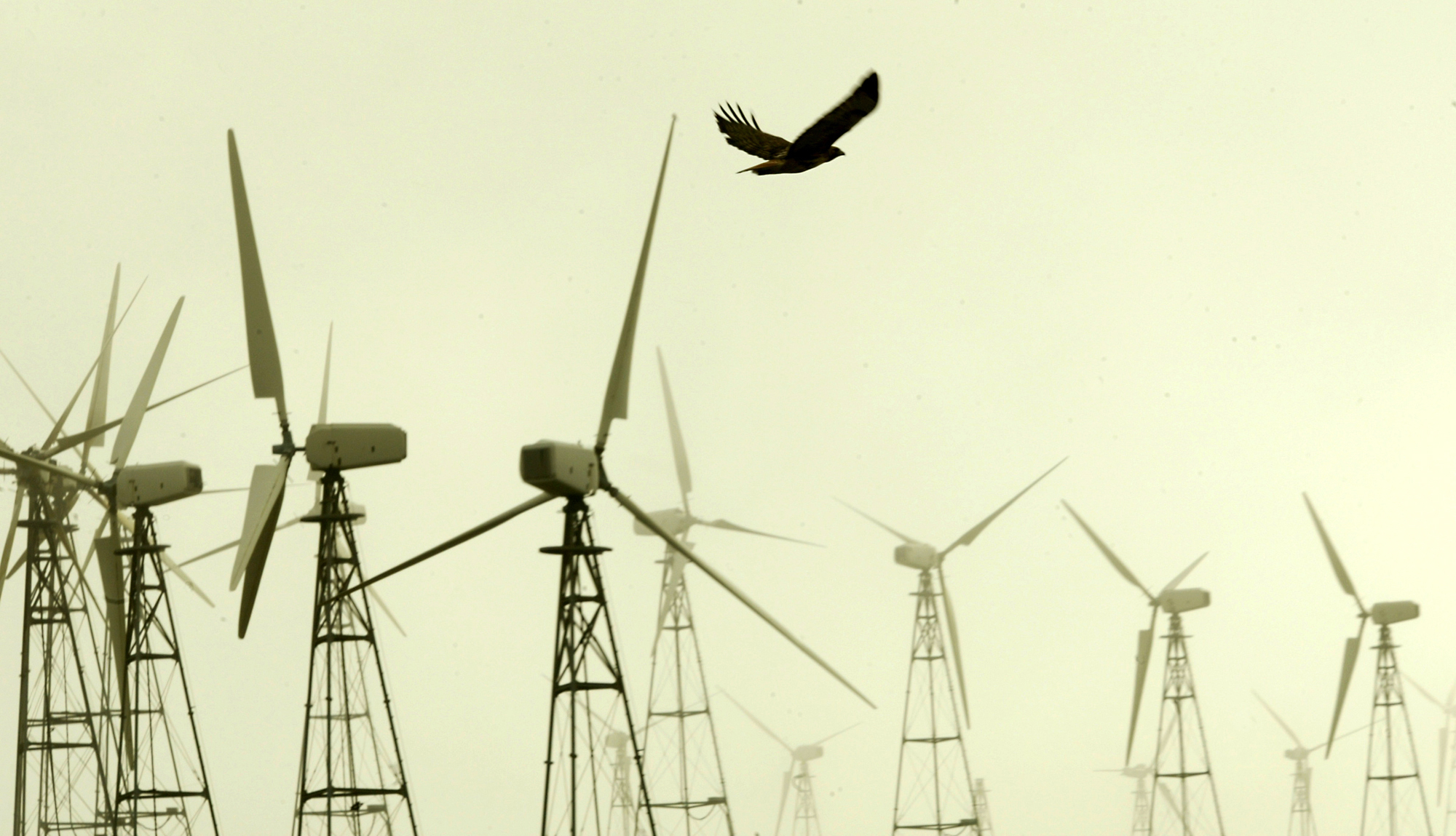
ABC had previously voiced concerns over the state’s draft siting guidelines and is also opposing Heritage Wind, a renewable energy farm proposed for a rural town just north of Buffalo. The group contends this upstate project will devastate the local bald eagle population — a claim contrary to that of the developers, who, following two years of data collection, found that few rare birds inhabit the siting area. (Even so, they’ve agreed to limit turbine motion at night as a precaution.)
If successful, ABC could halt Heritage, overturn New York’s siting rules, and prevent the Empire State from meeting its lofty green energy goals. It’s taken a similarly combative posture nationwide. Over the last decade or so, the influential organization, which sits on a nest egg of $20 million in annual revenue, has repeatedly deployed representatives to oppose wind energy projects, defang renewable energy legislation, influence journalism, and legitimize anti-wind activists and climate change skeptics through a powerful but misleading argument: that wind power is uniquely environmentally destructive and may do more harm than good. ABC literature pushing this position has been cited by a wide array of wind energy opponents, including local community groups, members of Congress, and former President Donald Trump.
“Alternative energy is not ‘green’ if it is killing hundreds or thousands or millions of birds annually,” an ABC official said in 2016. “Our wildlife should not be collateral damage in our effort to combat climate change, nor does it have to be.”
The scope of ABC’s anti-wind work includes campaigns in more than a dozen U.S. states and countries from Brazil to South Africa. The organization has lobbied Capitol Hill against the Public Land Renewable Energy Development Act, sought stringent new federal regulations over wind siting, and reacted to President Joe’s Biden recently announced push for more offshore wind with caution.
It’s true that the very nature of wind turbines — tall, sharp, and spinning — poses a legitimate threat to the winged. While research into the exact number of fowl fatalities is somewhat lacking, mainstream scientists contend that turbines kill somewhere between 140,000 and 500,000 birds per year. That estimate is considerably lower than the range put out by ABC, which has cited annual mortality estimates between 600,000 and somewhere north of 1 million.
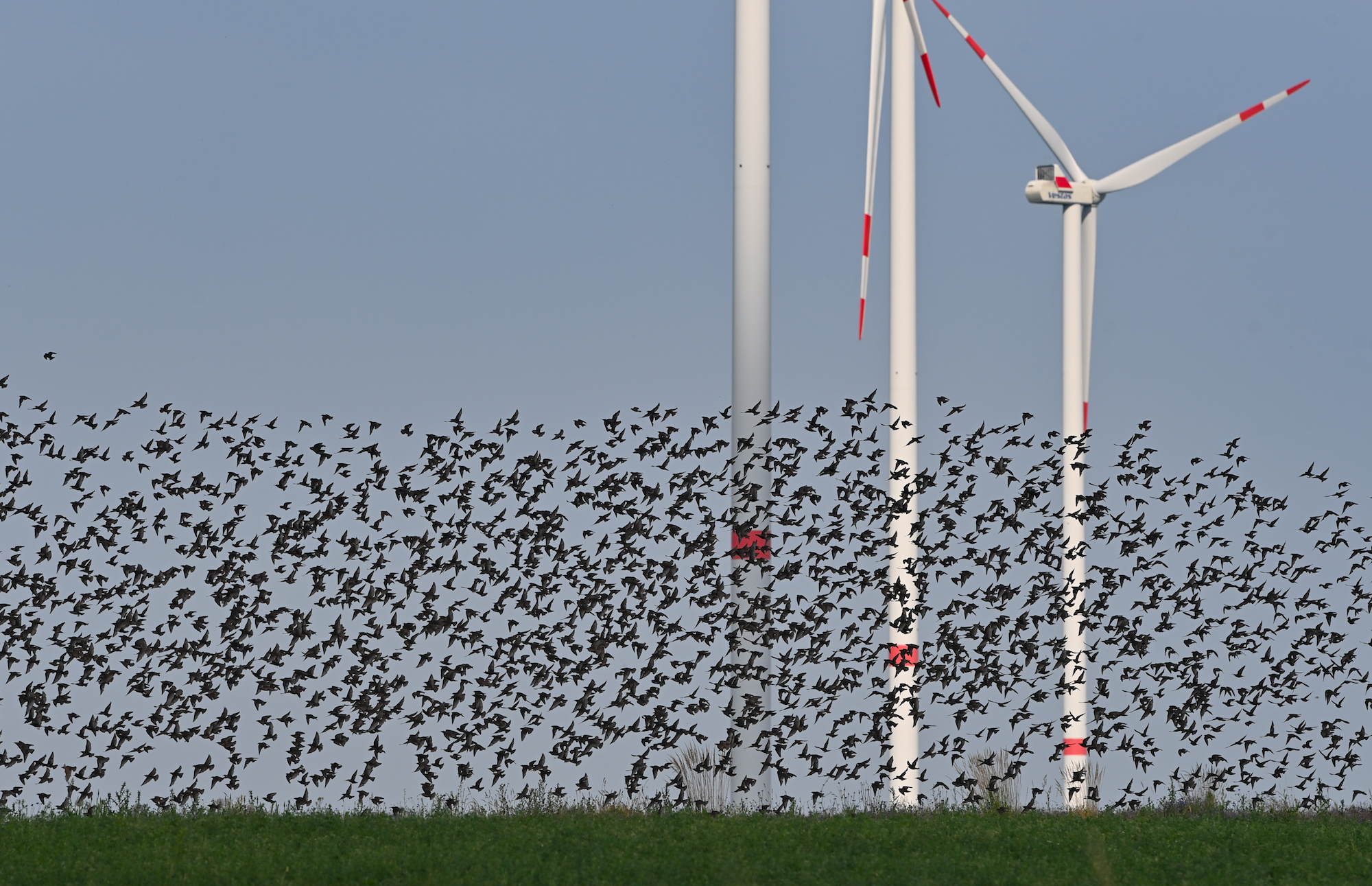
These numbers, while not insignificant, pale in comparison to the hundreds of millions of birds killed in building collisions each year, or the billions butchered by cats. Fossil fuels, meanwhile, wreak both immediate and long-term havoc on the avian population. While oil pits, for instance, may kill up to 1 million birds a year, a seminal 2014 report from the National Audubon Society found that climate change would soon threaten the habitats of more than half of North America’s 588 bird species. In 2019, the group released a second, more urgent report showing that two-thirds of North American birds faced total extinction from our warming planet. Among those most at risk is the ruby-throated hummingbird, which serves as ABC’s mascot.
ABC’s zealous opposition to wind represents a curious reversal in rhetoric. In 2005, before many conservation groups worried about the effects of climate change on the world’s fowl, ABC billed itself as being “at the forefront of research” into changes in bird populations “possibly attributable to climate change.”
Since then, however, the organization quietly accepted at least $1 million from fossil fuel interests and welcomed board members tied to dirty energy companies, according to its annual reports and Internal Revenue Service filings. As other conservation groups have prioritized fighting climate change above all else, ABC has transformed into a particularly aggressive foe of wind energy.
On occasion, ABC’s has stood arm-in-arm with the broader conservation community to oppose wind projects that pose particularly severe threats to local ecosystems. Yet for the preponderance of projects opposed by the organization, the birding group flies solo — or aligns itself with anti-environmental forces.
Take one of their very first wind fights a decade ago, which concerned the ambitious Cape Wind project in Massachusetts. While many conservationists supported the project, which was intended to be America’s first offshore wind farm, ABC aligned itself with the Alliance to Protect Nantucket Sound — a group backed by the third, lesser-known Koch brother, William. That project, which ignited fierce debate in the region, was eventually abandoned.
ABC has similarly found itself on the same side as the Murray Energy coal company in its ongoing fight against Project Icebreaker, which is set to be the first freshwater wind farm in North America and only the second offshore wind project in the country. The six-turbine project is also testing the viability of renewable energy on the Great Lakes, which hold one-fifth of all offshore wind potential in the U.S. The developers are hoping to demonstrate a promising new type of offshore turbine foundation called the Mono Bucket, which promises to reduce both costs and environmental impacts.
While a local coalition of Democrats, Republicans, business leaders, and environmentalists has lined up behind Icebreaker, ABC has vigorously opposed the project for years. It has submitted negative testimony warning of mass avian slaughter, questioned positive environmental assessments, and quietly coordinated with a U.S. Fish and Wildlife official who gummed up the works for Icebreaker officials as they navigated the federal regulatory process. They’ve also formally opposed Icebreaker before the Ohio Power Siting Board, which holds ultimate power over the project’s future, and filed a still-pending federal lawsuit demanding a fresh environmental assessment.
These and other tactics have put the publicly-funded Icebreaker years behind schedule. The Norwegian company contracted to build and oversee the project is becoming impatient and may soon pull out, leaving the dream of wind energy on the Great Lakes in jeopardy. “Why are U.S. taxpayer dollars supporting this in the first place?” ABC’s President, Mike Parr, said when announcing their 2019 suit against Icebreaker. “Migratory birds are a common good of the American people. The government has a duty to protect them more than international business interests.”
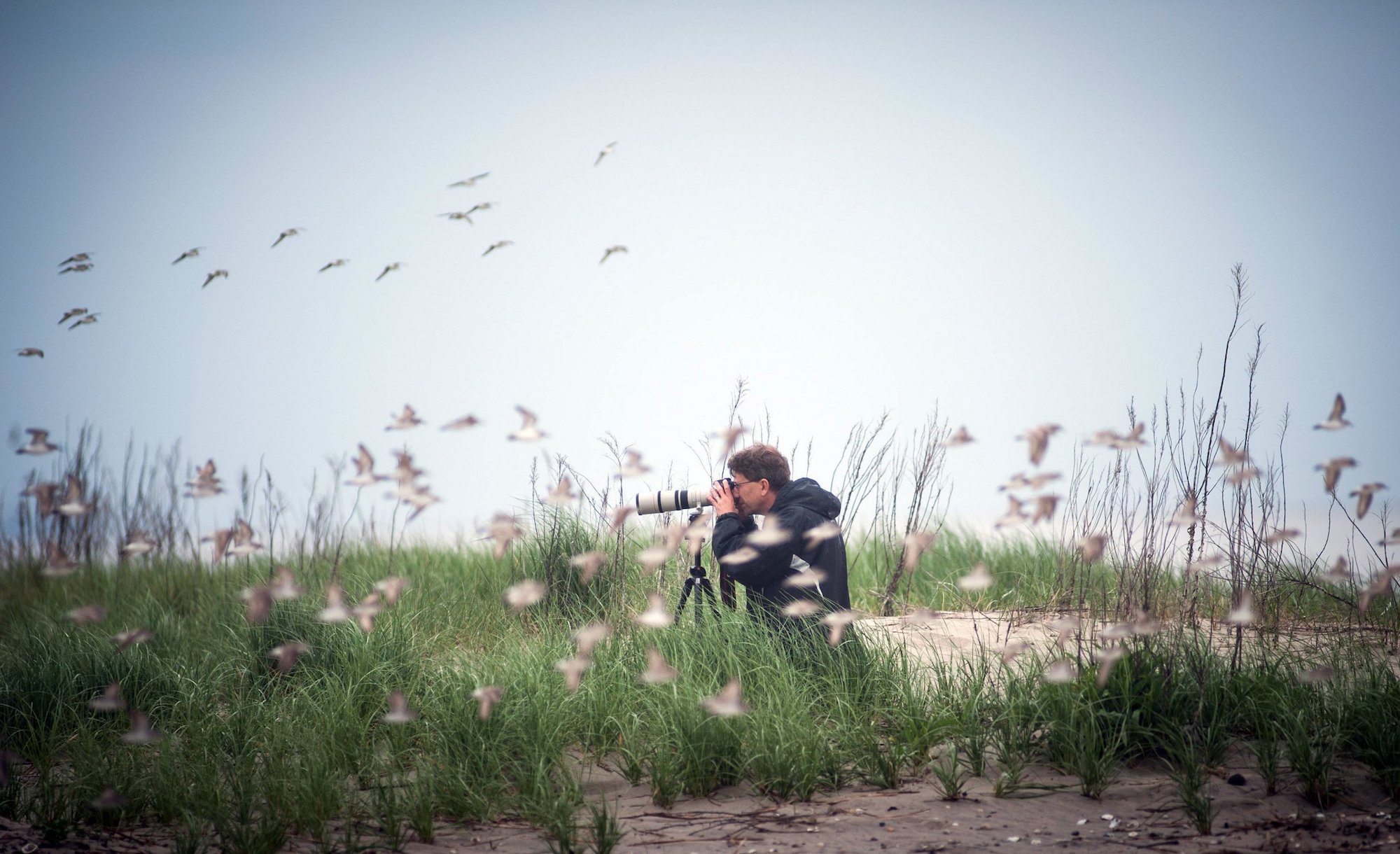
ABC purports to support wind power in general. When contacted by Grist, Parr pointed out the organization’s qualified support for Hawaii’s wind energy policies and provided a letter, signed by ABC and other groups, expressing opposition to offshore oil drilling. He also provided a 2017 blog post in which a top ABC official contended that “properly sited wind turbines are relatively bird friendly, especially when compared to fossil fuels.” (Parr, however, left out the next sentence in the post, which contends that wind “is far from benign.”)
On another ABC webpage from that same year, the organization declares, “We know of no existing wind energy project in the United States or Canada that meets all of ABC’s criteria for bird-smart wind energy development.” After Grist first contacted Parr, ABC bolstered a page that acknowledged the dangers of climate change. It also deleted a sentence that said: “Climate change will affect birds, but exactly how is less than certain.”
To understand how extreme ABC’s stance on wind power has become, a comparison with America’s largest and best-known birding group is instructive. The Audubon Society has become largely supportive of wind power due to its potential to reduce carbon emissions and air pollution. In recent years, Audubon has collaborated with wind developers to develop bird-friendly siting guidelines, fought against state wind moratoriums, and corrected inflated estimates of wind-related bird deaths pushed by Trump’s Interior Secretary, Ryan Zinke. Today, Audubon supports an explicit target that half of American energy come from renewable sources by 2030. As a means to this end, it has given a conditional blessing to Icebreaker and other major wind projects.
“We are cooperatively engaged with the wind industry to find paths forward,” said Garry George, Audubon’s Clean Energy Director. “We don’t think attacking an industry is a good approach. We don’t see ABC in those joint efforts — that’s not a part of their strategy.”
McGrath offered a similar perspective from her work in New York. “ABC takes the view that we should protect every bird,” she said. “Audubon’s stance is to focus on endangered and threatened species, and also protecting the places they live from climate change.”
“ABC has isolated itself,” Jack Clarke, the former director of public policy at the Massachusetts Audubon Society, told Grist before his retirement in 2020. “I and many other birders are working with federal and state agencies, nonprofits, and wind energy companies in coming together to look at how best to protect wildlife while responsibility siting wind facilities. It can be done.”**
From one point of view, ABC has chosen to prioritize the short-term conservation of unspoiled acres over the long-term development of sustainable energy infrastructure that could mitigate dramatic climate change. This ethic is perhaps best exemplified by a 2015 essay in The New Yorker by long-time ABC board member and novelist Jonathan Franzen, which that suggested that the temporary protection of America’s flora and fauna might justify rejecting green energy development. (Franzen, through his publicist, declined Grist’s request for comment.)

“We can dam every river and blight every landscape with biofuel agriculture, solar farms, and wind turbines, to buy some extra years of moderated warming,” Franzen wrote. “Or we can settle for a shorter life of higher quality, protecting the areas where wild animals and plants are hanging on, at the cost of slightly hastening the human catastrophe.”
But while Franzen explicitly posits a tradeoff between habitat conservation and climate action, ABC’s institutional position is considerably more evasive. The group’s website suggests, for instance, that deforestation is the main culprit of any human-caused climate change — and reforestation the primary solution. It also claims, inaccurately, that the U.S. is the world leader in wind energy (it’s China). ABC has expressed wariness of solar energy for its (rare) potential to incinerate birds. “These losses are not trivial,” the group argues in a white paper. “And, when population numbers are low, the loss of even small numbers of individuals can have a population-level effect.”
The group’s eye-popping estimates and harsh rhetoric have made it a go-to source for conservative actors that deny climate science and minimize the benefits of renewable energy. Two organizations tied to the Koch family — the Heartland Institute and the Mackinac Center — have cited ABC dozens of times in blog posts and policy papers that demonize green energy development as impractical, inefficient, and ecologically destructive. In 2012, Fox News parroted ABC’s belief that the Obama administration was “playing favorites and does not hold the wind industry to the same standards as other energy generators.” Before becoming president, Donald Trump cited ABC literature during his fractious fight with the Scottish government over a proposed 11-turbine offshore wind development that would be seen from his golf course.
Oddly enough, ABC was once at the forefront in warning of the disastrous impacts of climate change on the world’s birds. In the early 2000s, the group worked with the Environmental Protection Agency and the U.S. Geological Survey on climate studies, and staffers participated in the Intergovernmental Panel on Climate Change. In 2002, ABC even collaborated with the National Wildlife Federation on a booklet entitled “The Birdwatcher’s Guide to Global Warming.”
ABC raised concerns about wind energy’s threat to birds in archived posts from that period, but it maintained a posture of overall support for the renewable energy source. “With sound pre-construction analysis of each wind energy site and with proper safeguards to birds and bats, ABC believes that wind energy can be a good choice for our nation’s future and our wildlife,” one 2005 ABC post reads.
Gerard Winegrad, who served as ABC’s vice president for policy from 1995 until 2008, authored wind siting guidelines that the organization has since disregarded for far stricter recommendations. At ABC, Winegrad led a joint effort with the American Wind Energy Association, the trade group representing U.S. wind power developers, to host a forum intended to help developers understand and minimize the effects that turbines could have on birds and bats. By 2011, however, ABC was slamming the trade group for supposedly spinning “outdated and misleading information” on bird fatalities.
“I have noticed that they have become more aggressive on wind siting — and suing — since I left,” Winegrad said. Indeed, none of the four federal suits ABC brought from their founding in 1994 to Winegrad’s 2008 departure concerned wind power. Since he’s left, the organization has filed 13 more federal cases, five of which could have the effect of stymying wind projects. Winegrad called ABC’s current across-the-board opposition to wind development a “radical change” from the organization’s outlook during his tenure.
Jeff Price, who served as ABC’s director of climate change impact studies until 2004 and co-wrote the “The Birdwatcher’s Guide to Global Warming,” said that ABC was open to properly-sited wind projects while he was on the organization’s staff.
Price, whose position was eliminated after he left in 2004, said ABC’s current stance on climate change amounted to “uncertainty paralysis” and called its online materials on the issue “appalling.” What’s most striking, he said, is that as the science linking climate change to bird endangerment grows stronger, ABC’s stance on climate change has softened.
“It struck me as a website that’s a good 10 to 15 years out of date,” he said. “You compare it with any other environmental group I’ve looked at, and it’s way behind the curve.”
The exact reasons for this trend in the organization’s stance on wind are unclear, but it does appear to coincide with a growing reliance on funding and personnel with origins in the fossil fuel industry over the last two decades. Between 2000 and 2004, ABC began receiving financial support from a slate of fossil fuel companies including the electricity company PPL Montana, Cascade Natural Gas, ExxonMobil, and ConocoPhillips. The size of these donations is not specified in ABC’s annual reports or government filings, but ABC President Mike Parr said he believed they were small matching corporate gifts.
If that’s the case, the role of fossil fuel companies began to grow in subsequent years. In 2008, ConocoPhillips gave ABC at least $100,000. Around the same time, the company invested more than $250,000 to purchase sensitive bird habitats in Peru and Colombia for “ABC partners” to conserve. On its website, ABC described this as part of a “major funding partnership” with ConocoPhillips, whose name subsequently adorned ABC’s homepage alongside the words “featured sponsor.” (Two years ago, the company again gave at least $250,000, according to ABC’s 2019 annual report.)
In the late 2000s, other fossil fuel ventures joined the ranks of ABC benefactors, though annual reports show that some of the new entrants gave as little as $1,000 or $2,000 per year. Additionally, BP, ExxonMobil, Chevron, and other oil companies set up matching gift programs with ABC; Parr said the organization has received only modest donations through these programs.
ABC has also received at least $135,000 from the personal foundations of two Texas oil titans, Malcolm C. Damuth and Robert J. Kleberg. A nature foundation founded by Mohamed bin Zayed, the Crown Prince of Abu Dhabi who was made wealthy by the country’s vast oil reserves, has given ABC at least $240,000 since 2009. Parr has served on the board for bin Zayed’s environmental foundation, which largely funds projects focused on protecting the world’s most endangered species. (Earlier this year, bin Zayed cemented full control over his emirate’s nationalized oil firm.)
In conjunction with the ramp-up in fossil fuel donations in the late 2000s came a noticeable shift in the organization’s stance on renewables. While the group’s annual reports between 2000 and 2008 barely mention wind power, the 2009 report describes ABC as the “leading organization” working to eliminate avian threats from wind energy. Subsequent reports dedicated significant space to the threat of wind turbines.
The annual reports and ABC press releases show that increased fossil fuel donations were accompanied by concurrent changes in the composition of the nonprofit’s board of directors. In 2007, the board welcomed Jeff Woodman, a former executive at the multinational oil commodities trading company Vitol Inc., as its newest member. Woodman, who served on the ABC board until 2012, has donated hundreds of thousands of dollars to the nonprofit over the past decade. A year after Woodman’s appointment, ABC’s board recruited Richard Eales, a former director at Range Resources, which is one of the largest petroleum and natural gas exploration companies in the U.S. Eales has donated hundreds of thousands of dollars to ABC and served as the board’s treasurer and vice chair until 2018. (Grist’s attempts to reach Eales and Woodman for comment were unsuccessful.)
Asked about the organization’s support from fossil fuel interests, Parr said that “a significant portion of the American economy is derived from oil wealth” and that “most philanthropic ventures have some oil investment.”
“I think the basis of your story is flawed,” Parr told Grist.
The world’s first electricity-generating wind turbine was invented in 1888 by Cleveland native Charles Brush, a mustachioed and prolific inventor and philanthropist. Many supporters of Project Icebreaker, the wind development slated to be built eight miles due north of downtown Cleveland, view the project as reviving Brush’s vision.
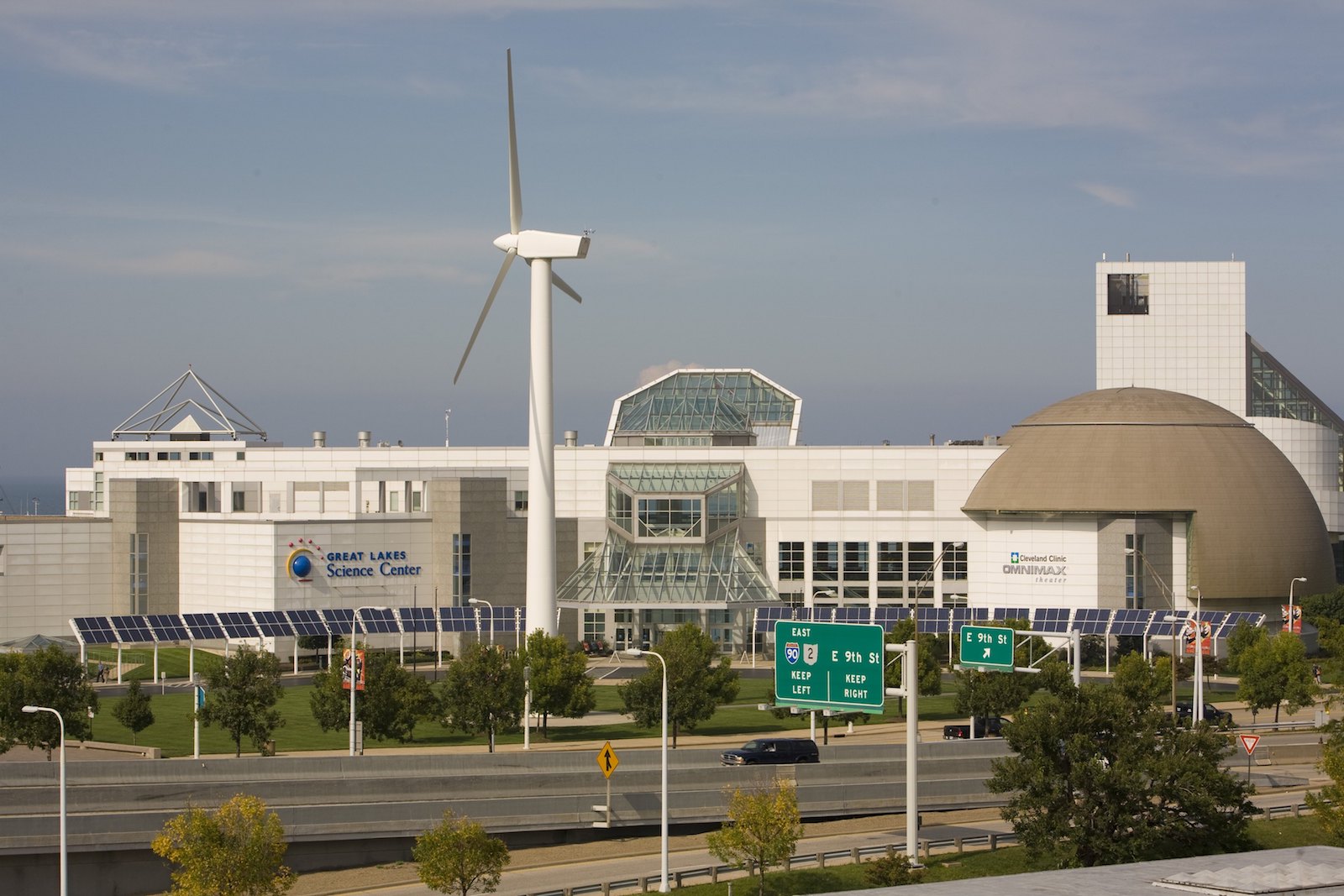
The project’s diverse slate of supporters includes Ohio’s U.S. Senators Sherrod Brown, a Democrat, and Rob Portman, a Republican, as well as former Republican Governor John Kasich. Icebreaker has also secured buy-in from the business community, as well as environmental leaders in the Sierra Club and the Ohio Environmental Council. The U.S. Fish and Wildlife Service helped pick the project’s location and size, and independent monitoring of avian activity in the proposed location was conducted by the Pacific Northwest National Laboratory, which is overseen by the U.S. Energy Department’s Office of Science.
Against this broad slate of supporters stands ABC and its local partner, another birding group called the Black Swamp Bird Observatory. After successfully preventing construction of a single-turbine project at the Camp Perry National Guard base on the western shores of Lake Erie, these two groups have launched a similar campaign against Icebreaker, claiming that its proposed location near a migratory pathway makes it one of “the worst possible locations for a wind power project.”
While Audubon supported ABC in their first Erie fight, ABC has struggled to attract allies in this one. That’s largely because Icebreaker is planned to be built far away from the western end of the lake, which sees the most bird activity. The U.S. Department of Energy, the Ohio Power Siting Board, and the U.S. Fish and Wildlife Service have all ruled there will be negligible wildlife impacts from the project. The Department of Energy’s final risk assessment declares that the fatality risks for birds “are expected to be lower for [Icebreaker] than for typical land-based wind energy facilities in the region.”
Meanwhile, Icebreaker’s developer, the Lake Erie Energy Development Corporation, or LEEDCo, has agreed to measure bird and bat activity before, during, and after construction. They have further pledged to slow the turbine speeds at times of high migration, install collision detection technology, and invest in a flashing light system, all of which are expected significantly decrease risks to birds and bats.
“We’ve found [LEEDCo] to be setting the bar really high,” said Trish Demeter, chief of staff at the Ohio Environmental Council. “They know they are trailblazers in this development on the lake, and they want to get it right.”
Caleb Gordon, an ornithologist and longtime wind energy consultant hired by LEEDCo to track bird and bat activity around Project Icebreaker’s proposed location, found ABC to be unbending in its perspective on the project. He said that while most birding groups wanted to engage with the developer, efforts to conduct bird observation with ABC officials were rebuffed. The few short meetings that ABC agreed to became confrontational, according to Gordon. He accused ABC of promulgating misleading and alarmist statistics on avian mortality.
“Honestly, anybody who is in this business knows that ABC has been the most outspoken group against wind,” Gordon said. “They say their policy is pro-wind, but just in the right place. But in practice they’ve opposed wind projects at every turn, all over the place — including very, very low-risk projects.”
While refusing to engage with LEEDCo, ABC cultivated an ally in Jeff Gosse, a former U.S. Fish and Wildlife Regional Energy Coordinator who, according to interviews and emails obtained by Grist through a public records request, worked inside the agency to enact new bureaucratic hurdles for Icebreaker’s developers.
As ABC publicly demanded more radar studies to determine the risks Icebreaker posed to birds, organization officials corresponded privately with Gosse to discuss wind on Lake Erie. Gosse forwarded ABC officials information he obtained regarding various wind projects, and he participated in a July 2016 meeting with ABC and Black Swamp officials that focused on the two organizations’ “efforts to protect the Lake Erie basin from wind energy development” as well as their work to support the “revision of Ohio law regarding wind energy development.”
Gosse no longer works for the federal government, and questions concerning his departure were not answered by U.S. Fish and Wildlife.
After their push for more radar studies was rejected, ABC and Black Swamp filed a still-pending lawsuit alleging that the federal government “willfully ignored inconvenient data and shirked its obligations” in assessing the environmental impacts of the project. In announcing this litigation, Parr struck a conflicted note, saying “we regret that legal action is our only recourse.”
Icebreaker’s proponents say that ABC never sought information or engagement. Instead, they contend, the group is expressly focused on hostility and obstruction. This tension played out most vividly during a 2015 symposium on Icebreaker that sought to build consensus between industry and environmental interests. The conversation featured a representative from the Sierra Club, a since-deceased official from ABC, and Lorry Wagner, who was then the president of LEEDCo.
Despite a general atmosphere of goodwill, Wagner and another attendee recalled being taken aback by the ABC representative’s aggressive stance. “He got up before me and proceeded to say that every single peer-reviewed study of wind, birds, and bats is essentially bullshit,” Wagner recalled.
Later, a lifelong birder in the audience asked about ABC’s position on Ohio’s coal industry, which has polluted Lake Erie with enough mercury to threaten the viability of local loons and bald eagles. Wagner still remembers the ABC official’s response: “Coal is not our concern.”
* Editor’s note: The Natural Resources Defense Council is an advertiser with Grist. Advertisers have no role in Grist’s editorial decisions.
** Correction: This story has been updated to reflect that Jack Clarke is no longer the director of public policy at the Massachusetts Audubon Society.

